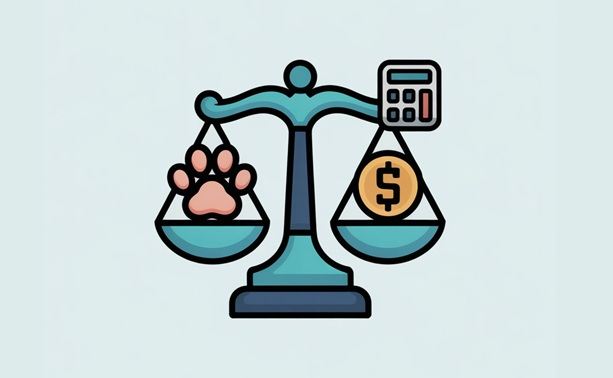Dog Bite Settlement Calculator
Estimate settlements using Multiplier or Per Diem methods with comparative negligence and optional structured payout.
This calculator is for educational estimation only and does not constitute legal advice. Consult an attorney licensed in your state.

Dog Bite Settlement Calculator 2025 Guide
Look, no one wakes up planning to Google “dog bite settlement calculator.” But when a bite happens—at a park, a neighbor’s yard, or during a delivery—you want straight answers, fast. How much is a fair settlement? What goes into the number? And how do you estimate it without getting lost in legalese?
This guide breaks it down with real math, clear examples, and easy tables you can use right now. It’s not legal advice—but it will make you a sharper negotiator and a smarter claimant.
How Dog Bite Settlements Are Built
Think of the calculation as blocks that stack:
Economic damages
- Past medical bills
- Future medical care/therapy
- Lost wages (and lost earning capacity if long-term)
- Out-of-pocket costs (bandages, meds, travel to doctors)
- Property damage (clothing, glasses)
Non-economic damages
- Pain and suffering
- Emotional distress/trauma (e.g., fear of dogs, nightmares)
- Scarring/disfigurement and visibility (especially face/hands)
- Loss of enjoyment of life
Adjustments
- Liability strength (0–100%)
- Comparative fault (provocation, trespass)
- State law (strict liability vs. “knowledge” rules)
- Policy limits (the “ceiling” of insurance coverage)
A simple calculator you can use:
- Base = (Past Medical + Future Medical) × Pain Multiplier
- Then add: Lost Wages + Out-of-Pocket + Specific Scarring Value
- Apply Liability Factor (e.g., 100% if clear liability, 80% if you’re 20% at fault)
- Cap at Policy Limit if applicable
Estimated Settlement = MIN([(Medicals × Multiplier) + Wages + OOP + Scar Value] × Liability Factor, Policy Limit)
Note: Some adjusters multiply total economic damages (medicals + wages). Many experienced attorneys multiply medicals only, then add wages and special categories like disfigurement. Both methods appear in real negotiations.
Severity Levels and Typical Ranges
Use this table to “ballpark” your multiplier and see how scarring can change value.
| Severity Level | Typical Medicals | Pain Multiplier (range) | Scarring/Disfigurement Add-On (range) |
|---|---|---|---|
| Level 1: Minor punctures/scrapes | 300–300–2,500 | 1.2–1.8 | 0–0–5,000 |
| Level 2: Moderate lacerations (stitches) | 2,500–2,500–10,000 | 1.8–3.0 | 2,000–2,000–15,000 |
| Level 3: Serious lacerations/surgery | 10,000–10,000–50,000 | 2.5–4.0 | 10,000–10,000–100,000+ |
| Level 4: Catastrophic/facial disfigurement | 50,000–50,000–300,000+ | 3.0–5.0+ | 50,000–50,000–500,000+ |
Reality check:
- Children’s scarring values can be substantially higher, especially for facial scars.
- Infections (MRSA), nerve damage, or rabies prophylaxis increase medicals and multipliers.
How to Calculate Dog Bite Settlements (Step‑by‑Step)
There’s no one “official” formula, but two common approaches help estimate non‑economic damages (pain & suffering) alongside economic damages (medical bills, lost wages, property damage, and other costs).
1) Multiplier Method
Calculate Economic Damages, then multiply by a severity factor (typically 1.5–5) to estimate pain and suffering.
Economic Damages = Medical (past + future) + Lost Wages + Property Damage + Other Expenses
Non‑Economic (Multiplier) = Economic Damages × Multiplier
Subtotal = Economic Damages + Non‑Economic (+ Punitive if applicable)
Final Settlement = Subtotal × (1 − Victim Fault %)
Best for: Cases with strong documentation and injuries that can be reasonably graded by severity.
2) Per Diem Method
Assign a daily rate to pain & suffering and multiply by the number of days the victim is impacted.
Non‑Economic (Per Diem) = Daily Rate × Impact Days
Subtotal = Economic Damages + Non‑Economic (+ Punitive)
Final Settlement = Subtotal × (1 − Victim Fault %)
Best for: When the recovery timeline and daily impact are well defined (e.g., off work, active treatment).
20% at fault (provocation/trespass), the final settlement is reduced by 20%.
Case Variables Used to Calculate Settlements
Economic Damages (objective)
- Medical expenses: ER, surgery, medication, therapy, and anticipated future care.
- Lost wages: Daily wage × days missed from work.
- Property damage: Clothing, devices, or items damaged in the incident.
- Other expenses: Transportation to medical appointments, childcare, assistive devices, etc.
Non‑Economic Damages (subjective)
- Pain & suffering: Often estimated via the Multiplier or Per Diem method.
- Scarring/disfigurement: Location, visibility, permanence, future revision needs.
- Emotional distress: Fear, PTSD, anxiety, and sleep issues.
- Loss of enjoyment: Limits on hobbies, family time, and daily activities.
Additional Factors
- Punitive damages: Rare; punish egregious conduct and deter future harm.
- Insurance policy limits: Caps can constrain payout regardless of calculated value.
- Evidence strength: Medical records, photos, witness statements, animal control reports.
- Venue & norms: Some jurisdictions trend higher/lower on awards.
Other Legal Considerations That Can Affect Settlement Value
Comparative Negligence
Reduces compensation by the victim’s share of fault. In modified comparative negligence states, recovery can be barred if the victim’s fault exceeds a threshold (e.g., 50% or 51%).
Statute of Limitations
Each state sets a deadline to file. Missing it can forfeit the right to compensation. Act quickly and check your state’s rule.
State Liability Rules
- Strict liability: Owner liable regardless of prior knowledge of viciousness.
- One‑bite rule: Victim may need to show the owner knew/should have known the dog was dangerous.
- Local ordinances: Leash laws & dangerous dog designations influence liability and damages.
Settlement Negotiations
Insurers weigh medical documentation, permanency, scarring, liability clarity, trial risk, and policy limits. Results vary by case strength.
Dog Bite Settlement Examples
Example 1 — Multiplier + Fault Reduction
| Medical (past + future) | $6,000 |
|---|---|
| Lost wages | $2,000 |
| Property/Other | $550 |
| Economic damages | $8,550 |
| Multiplier | 3.0 |
| Non‑economic | $8,550 × 3 = $25,650 |
| Subtotal | $34,200 |
| Victim fault | 20% |
| Final | $34,200 × 0.80 = $27,360 |
Example 2 — Per Diem, No Fault
| Economic damages | $19,800 |
|---|---|
| Per diem | $180/day × 120 days = $21,600 |
| Subtotal | $41,400 |
| Victim fault | 0% |
| Final | $41,400 |
Example 3 — Severe Case, Multiplier + Punitive
| Economic damages | $187,700 |
|---|---|
| Multiplier | 4.5 → Non‑economic = $844,650 |
| Punitive | $50,000 |
| Final (no fault) | $187,700 + $844,650 + $50,000 = $1,082,350 |
These examples are educational and not predictions. Actual outcomes depend on evidence, jurisdiction, policy limits, and negotiation strategy.
Average Dog Bite Settlement Amounts (Chart)
Illustrative Midpoints by Severity
For demonstration only (not market data). Actual averages vary widely by state, insurer, policy limits, and case facts.
Insurers/courts weigh medical documentation, permanency, scarring, liability clarity, and policy limits; these often drive the “real” average more than any rule of thumb.
Important Disclaimer
Want to customize this guide with state‑specific rules (strict liability vs. one‑bite)?
The Policy Limit Problem (And How Pros Handle It)
- Typical homeowner/renter BI limits: $100,000, $300,000, sometimes $500,000.
- Umbrella policies: Often $1M+; adjusters won’t volunteer them—your attorney will ask in writing.
If your case value exceeds limits, you can:
- Negotiate for policy limits + umbrella.
- Seek a contribution from the dog owner (personal assets).
- Consider “excess exposure” tactics if the insurer unreasonably refuses to tender limits on a clear, serious claim.
Insurers also sometimes have dog-breed exclusions or prior-bite exclusions. If coverage is denied, you may be negotiating with the owner directly.
State Law Matters
- Strict liability states: Owners are responsible for bites regardless of prior behavior, with limited defenses (provocation, trespass). Examples include California, Florida, Illinois, New Jersey, Michigan.
- “One-bite” or knowledge states: You must show the owner knew or should’ve known the dog had dangerous tendencies, or prove negligence (e.g., leash-law violations). Examples include Texas and Virginia.
- Comparative negligence: In many states, your settlement drops by your share of fault (e.g., 20% provocation = 20% reduction).
- Statute of limitations: Commonly 1–3 years for adults; often tolled for minors until 18 (then 1–3 more years). Don’t wait—evidence goes stale.
- Damages caps: Some states cap non-economic damages in personal injury cases; others don’t. Caps rarely apply to medical bills and wages.
What Adjusters Actually Look For
- Liability clarity: Police/animal control report, witness statements, 911 call, doorbell cam footage.
- Medical timeline: Immediate care, consistent follow-ups, specialist notes (plastics, ortho, psych).
- Scar documentation: Clear, well-lit photos over time; plastic surgeon evaluations; visibility in normal life.
- Wage loss proof: Employer letter, paystubs, tax records (self-employed).
- Prior bites/violations: Leash-law citations, HOA complaints, prior insurance claims.
- Your credibility: Contemporaneous notes, no gaps in treatment, reasonable billing.
Pro tip: Don’t overshare on social media. Defense will screenshot everything.
Trends We’re Seeing in 2024–2025
- Costs rising: Average cost per claim has generally trended up over the past decade due to medical inflation, plastic surgery pricing, and litigation costs. Industry sources estimate more than $1B in dog-related injury payouts annually.
- Children’s claims scrutinized: Juries and adjusters place higher value on visible facial scarring and long-term anxiety in minors.
- Doorbell and phone video are settling cases faster—either strengthening liability or killing it.
- Breed exclusions: Some carriers exclude certain breeds or prior-bite dogs; others surcharge premiums. Coverage questions are coming up more often.
What Increases (or Kills) Your Dog Bite Settlement
Boosts value
- Clear liability (off-leash in a leash zone, prior bites)
- Immediate medical care and consistent treatment
- Plastic surgeon evaluations for visible scars
- Documented counseling for anxiety/PTSD
- Strong before/after evidence (photos, activities you can’t do now)
Hurts value
- Gaps in treatment or “doctor shopping”
- Provocation evidence (teasing, cornering)
- Trespassing or warning signs ignored
- Minimal medicals but extreme “pain” claims with weak proof
Landmine vs. Leverage
| Factor | Low Settlement Risk | Higher Settlement Value |
|---|---|---|
| Liability | Disputed, no report, provocation | Clear report, witnesses, video |
| Medicals | Delayed care, light treatment | Immediate care, specialist notes |
| Scarring | Non-visible, minimal | Visible, especially facial/hand, surgeon report |
| Employment | No documentation | Verified wage loss with records |
| Coverage | Low policy limit, exclusions | Higher limit, umbrella coverage |
| Documentation | Sparse, inconsistent | Organized, photo timeline, journal |
FAQ/ Frequently Asked Questions
A fair and minor dog bite settlement starts with real numbers: medical bills, future care, lost wages, and the human impact—pain, anxiety, and scarring. Then the law and insurance limits shape the final check. Use the calculator approach: Medicals × Multiplier + Wages/OOP + Scarring, adjusted for liability and capped by policy limits. Scars—especially on kids—carry long-term costs beyond stitches. Document them well.
You can explore Similar Calculator like this Land Contract Calculator.

